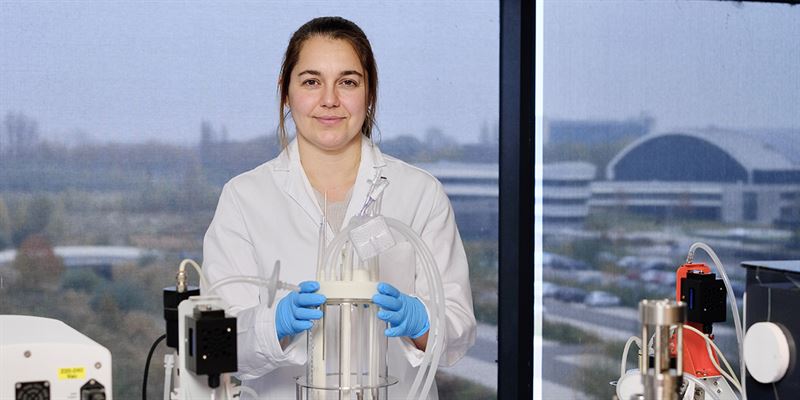Bioreactor cultivation used for cancer research and making red blood cells
The recent focus on vaccine development highlighted the role of bioreactors in medical research. Getinge’s Cristina Bernal-Martinez takes us through how bioreactors work and their ability to assist researchers in finding cancer treatments and growing red blood cells.

“A bioreactor provides an ideal sterile environment for cells to multiply while avoiding cross-contamination. Bioreactors can only do this efficiently when the conditions are right, and the bioreactor enables us to control the temperature, maintain pH, ensure a sufficient gas supply and add nutrients, without disturbing or contaminating the process,” said Cristina Bernal-Martinez.
After she left her native Spain to study in the Netherlands, Cristina’s interest in bioreactors grew while pursuing her PhD degree. This growing interest paved the way to her present position as Cultivation and Application Specialist at Getinge’s Applikon site in Delft.
“It is inspiring to work with devices that among other things are valuable for researchers who study how cancer cells behave or are aiming to cultivate T-cells that are part of the human immune system.”
In recent years, T-cell therapy has emerged as a promising treatment for systemic cancers, such as Acute Lymphoblastic Leukemia. However, since the cultivating process is challenging, it is crucial to understand the effect of various conditions on the expansion and differentiation of T-cells.
Getinge’s Applikon team has worked with T-cell cultivation in a project with a university in the United Kingdom. The researchers investigated different screening conditions using the company’s single-use microbioreactor, micro-Matrix.
“Our micro-Matrix is a true scale down of small-scale bioreactors. With independent control over its 24 independent bioreactors, pH, and temperature and oxygen levels, researchers are able to perform more cultivations in less time,” Cristina explains.
This research project also investigated the effect of CO2 on the expansion of T-cells with Getinge’s single-use bioreactor AppliFlex ST.
“Our AppliFlex ST is a fully customizable bioreactor, optimal for avoiding the risk of cross-contamination. The customer can easily configure a new vessel for each new process by utilizing the 3D printing manufacturing process,” Cristina explains.
Getinge is also collaborating with several research organizations focusing on blood cell cultivation. “Production of red blood cells in bioreactors is a potential alternative to donor-derived transfusions. Traditional blood donation efforts are jeopardized by short supplies and emerging blood-borne diseases in many places,” Cristina says.
She continues:
“The challenge is to innovate a culture process that can produce enough blood cells. Tests with nine days of culture in our AppliFlex bioreactors have enabled the research team to move closer to reaching the large number of red blood cells needed for a single transfusion, which would help save lives. A lot is happening within the bioreactor field, which is very exciting.”
Getinge’s Applikon bioreactor systems >>
Media contact:
Anna Appelqvist, VP Corporate Communications
Tel.: +46 (0)10-335 5906
E-post: anna.appelqvist@getinge.com
About Getinge
With a firm belief that every person and community should have access to the best possible care, Getinge provides hospitals and life science institutions with products and solutions that aim to improve clinical results and optimize workflows. The offering includes products and solutions for intensive care, cardiovascular procedures, operating rooms, sterile reprocessing and life science. Getinge employs over 10,000 people worldwide and the products are sold in more than 135 countries.
Tags:


